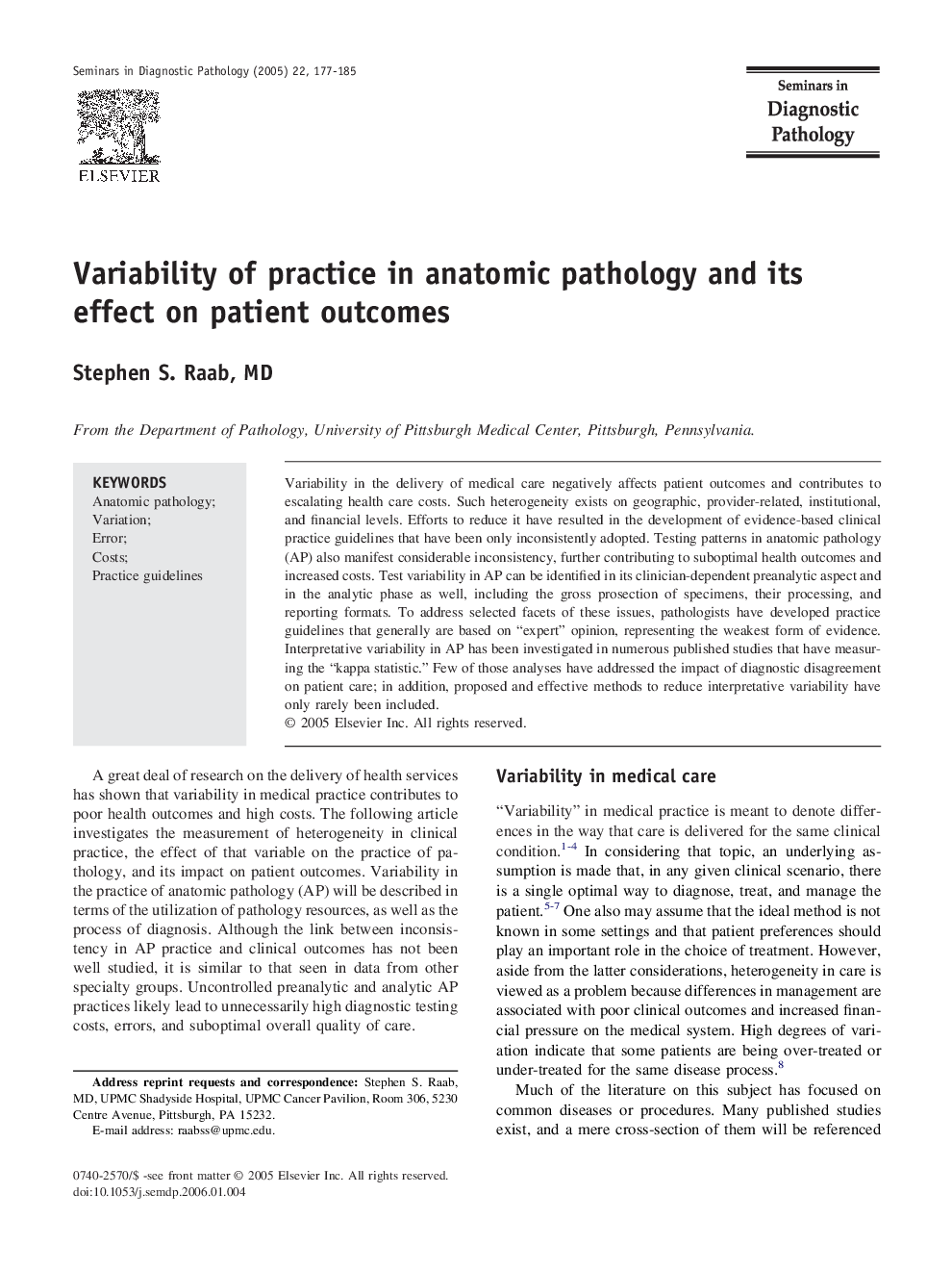| Article ID | Journal | Published Year | Pages | File Type |
|---|---|---|---|---|
| 9367599 | Seminars in Diagnostic Pathology | 2005 | 9 Pages |
Abstract
Variability in the delivery of medical care negatively affects patient outcomes and contributes to escalating health care costs. Such heterogeneity exists on geographic, provider-related, institutional, and financial levels. Efforts to reduce it have resulted in the development of evidence-based clinical practice guidelines that have been only inconsistently adopted. Testing patterns in anatomic pathology (AP) also manifest considerable inconsistency, further contributing to suboptimal health outcomes and increased costs. Test variability in AP can be identified in its clinician-dependent preanalytic aspect and in the analytic phase as well, including the gross prosection of specimens, their processing, and reporting formats. To address selected facets of these issues, pathologists have developed practice guidelines that generally are based on “expert” opinion, representing the weakest form of evidence. Interpretative variability in AP has been investigated in numerous published studies that have measuring the “kappa statistic.” Few of those analyses have addressed the impact of diagnostic disagreement on patient care; in addition, proposed and effective methods to reduce interpretative variability have only rarely been included.
Related Topics
Health Sciences
Medicine and Dentistry
Pathology and Medical Technology
Authors
Stephen S. MD,
